Many years ago, I ran cultural exchange programs in Puerto Rico. Carmen Judith Nine Curt, a Puerto Rican educator who specialized in cultural, non-verbal communication, often offered training in cultural differences. One afternoon, I sat next to a team leader. At a particular point in the presentation, he became very emotional and I noticed tears welling in his eyes. After the presentation, I sensitively asked what had caused his sadness. An overwhelming sense of guilt overcame him as Professor Curt explained cultural differences relative to eye contact. In the US, eye contact is valued as a sign of respect or attentiveness. In Puerto Rico, as in many other cultures, direct eye contact between opposite genders is generally understood as suggestive, and between the same genders as a threat. (Non-Verbal Communication in Puerto Rico, Dr. Carmen Judith Nine Curt, May 1984, http://files.eric.ed.gov/fulltext/ED258468.pdf) He recalled his days as a high school teacher. He had disciplined many Puerto Rican girls and boys for not looking him in the eye. He had made them stay after class and forced them to look directly into his eyes. He had unintentionally disrespected them by assuming that his cultural norm was universal. Lesson learned.
Shoulder to Shoulder deeply respects Hondurans and their culture. In many ways we, North Americans from the US, share a great deal with Hondurans: our aspirations for a just society, our desire to assist persons violated by poverty, a hope that our lives are purposely lived, and much more. Still, we look at the world slightly differently, we consider different approaches to problems, and we sometimes misunderstand one another. But, if we are willing to invest in a long-term relationship of working shoulder to shoulder to empower substantive change, we will find common ground, grow in mutual respect, and learn from one another. Relationships among persons from the same culture are difficult. Relationships between cultures are exponentially more difficult. It would be so much easier to simply assess the problem, design the solution, create a budget, send money, and tell the Hondurans what to do. No involvement, no partnership, no commitment to relationship. It is in fact easier, but it doesn’t work. Plenty of organizations have tried this, and still do. Like water poured on a duck’s back, it runs right off. Shoulder to Shoulder has chosen the less traveled path: investment, engagement, and commitment. Not an easy path, but certainly the meaningful one.
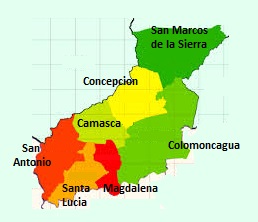
I was reflecting on all of this as Laura and I attended the inauguration ceremony of Shoulder to Shoulder’s new Convenio agreement with the Honduran Ministry of Health on Tuesday, April 28th in Camasca. This was an amazing occurrence. Overnight, Shoulder to Shoulder has literally doubled its responsibility in providing health care. Camasca and Colomoncagua are now included in our system, stretching our coverage south of Yamaranguila to the El Salvador border, from 37,000 persons to 69,000 persons. Two major clinics, one in Camasca and one in Colomoncagua, a birthing center in Camasca, and three satellite clinics in Colomoncagua have been assumed in Shoulder to Shoulder’s health system. Four doctors, six health promoters, three professional nurses, two dentists, two lab technicians, and 16 auxiliary nurses have been added to our health personnel. This is a phenomenal expansion. Shoulder to Shoulder is now essentially the exclusive provider of health care in the Frontera of Intibucá.

“Wow,” I thought as I arrived in Camasca at around 8:45 AM for the inaugural meeting scheduled for 9:00 AM. Laura and I, the Americans, were the only ones there by 9:00 AM. Over the next forty-five minutes a few people stroll in, but the major players, the doctors, the administrators, the mayors, the Ministry of Health personnel, have yet to arrive. I realize that this is how it is done in Honduras. A major meeting scheduled for 9:00 AM will not start prior to 10:30 AM. Though my cultural sensitivities are offended, though I want to scream “What about efficiency, good management, and accountability,” this is useless. If I actually complained, it would be met with expressions of incredulity. If you didn’t want to stand around and wait, why did you come on time? Still, I’m thinking of all the other things I could be doing. This is annoying to me. But, to a Honduran, this is valuable, the way things are done. So, I grin and bear it. As I wait, something else strikes me. As I boil inside and anxiously look around the room, I realize something else. Laura, I, and one other person, Kate, are from the US. Everyone else here is Honduran. Though this was the dream of people from the US, it is being realized by Hondurans. This is empowerment. This is development. This is a shoulder to shoulder enterprise.

The meeting finally starts sometime shortly after 10:30 AM. The presentations from Shoulder to Shoulder, the local governments, and the Ministry of Health are all celebratory and congratulatory. It emphasizes our capabilities and possibilities all in a positive tone. The questions and comments from the audience express fears and anxieties. There are many challenges of implementation yet to be faced. I guess they will be faced, hammered out, as we walk together on this journey. But I’m not thinking about our celebratory presentations or even the challenges of implementation we’ve yet to face. I’m thinking about how we arrived here at all. I’m thinking about the early years of our journey when US university brigades were the only health care in this huge swath of territory. There were no systems of health care save for a couple of gringo doctors and nurses who visited isolated towns without roads, electricity, or water. What tremendous cultural challenges they must have faced? I imagine them holding a community meeting with locals. The Hondurans arrive two hours after the scheduled time. Maybe those brigades felt frustration and anger. Maybe they chastised the people. Maybe they managed to hold their breath. Whatever it was, however great the cultural discord, they must have managed to stay the course, move beyond the cultural distance, and form relationships of mutual respect and empowerment. They must have shared their dreams, because these dreams are realized today among competent Honduran professionals. The shoulder to shoulder commitment today sustains a system of service and development anchored among the people of southern Intibucá.

Convenio, not easily translated into English, is derived from Latin and means to come together. The word Covenant is a derivation. Covenant is much more than a contract. A covenant implies not only the commitment of a task or property, but the willingness to give oneself over. This means challenge and personal transformation. It involves risk, it is difficult, and most of us will avoid this level of commitment. When divergent cultures are involved, it is wrenching. Why would anyone enter into a covenant relationship? Because it is the only way to effect substantive and meaningful change. New convenios found in honest cultural exchange await as we journey shoulder to shoulder.
It Was the Best of Times….
Some English guy, Dickies, or Dicksburg, I guess it was Dickens, wrote this book that I read in High School. In high school, most of us were stupefied by the oxymoronic opening line, “It was the best of times, it was the worst of times,…” It is cruel to expect a high school student to appreciate the wisdom contained in the classic phrase. For them, it is simply inane to describe anything as both the best and the worst. Only with lived experience does the inherent ambiguity of life become clear (or perhaps more completely muddled). With time and memory, failures are redefined successes, disappointment becomes hope, and life itself is elusive and mysterious. To gain wisdom is to be humbled. Wisdom is perhaps simply knowing that neither our intention nor expectation determines outcome. For all of our planning, our critical considerations, our need to control all variables, our intentional designs, outcomes are always a surprise. Some might call this Karma, or God, or simply mysterious principles of the universe. It is the worst: an unanticipated outcome for which we now must take responsibility. It is the best: something far beyond our limited design.
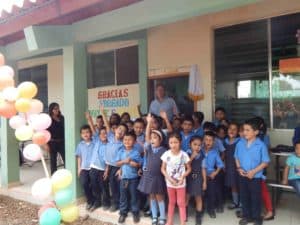
This aura of best and worst engulfed us this past week. Our board president, Attorney Wayne Waite, and the board secretary, Mr. Dwight Armstrong, arrived in Honduras on April 13. They were stretched this way and that in high powered meetings with Honduran government officials, US embassy representatives, university deans, local mayors, humanitarian organizations, Shoulder to Shoulder staff and supporters, and so many others. Draining as it must have been, they did find moments to refresh their spirits. The children at the Good Shepherd Bilingual School greeted them with the exuberance of youth. Dwight, a man of the earth, had the chance to breath in the rejuvenating air of a Camasca farm. Both of them had a moment to relax in our humble home in Concepcion where we listened attentively to their life stories and witnessed their admirable commitment to Shoulder to Shoulder. More meetings and visits followed them on their trek back to Tegucigalpa. Dreams and anxieties, the beauty of mission and the challenge of execution, the satisfaction of achievement and the weight of planning for the future, traveled with them, filling their heads and hearts in preparation for the board meeting.
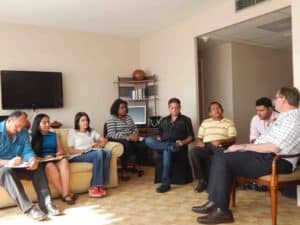
On Saturday morning, the Hombro a Hombro Board (the board for our Honduran NGO) began its deliberations. Laura and I were asked to attend. We believed we would be there for Saturday and leave on Sunday. But we were asked to stay on first until Monday, and then again until Tuesday. We hadn’t brought enough clothes and ended up washing them in the sink. The discussions were inspiring and animated. There are such great opportunities present to Shoulder to Shoulder in its mission of empowerment with the people of Intibucá. Our work in education is bringing hope to children. The potential in agricultural development and food security promises a path to prosperity in the Frontera. Our collaborative work with brigade partners and our expansion in new service areas bring well-being and health to the isolated and forgotten. The value of our present service and these golden opportunities for future service enliven us. But lest our euphoria swell our egos, serious challenges also confront us. Like any charitable organization, our slim and stretched resources threaten our goals. We also see our faults. We could be better organizers. We could be better communicators. Simply, I suppose, we could be better. On top of all this there is the stickiness of working collaboratively. The others, our partners, always have designs different than our own. Why can’t they just recognize that we are right and stop inserting their own thoughts? (It’s a joke)
So we have the best, and so we have the worst: our hearts exploding with joy and our minds crippled with angst. It would be so nice if our deliberations followed a clear and linear path. But rather our deliberations are circular, popping from one theme to the next, always elusive and exhausting. What should be our response? Should we follow our hearts? Should we follow our heads? These questions forever elude any answer.
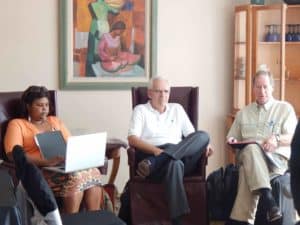
Monday afternoon I’m soaping up and rinsing out my few articles of clothing in the hotel room’s sink, feeling very sorry for myself. I despise doing laundry, even more so when I have to do it by hand which is more often the case than not here in Honduras. The questions weigh on my head and heart. Again feeling sorry for myself, I ask, “Why does it need to be so hard?” The answer I receive humbles me. It is hard because it is important. Ease is not the goal. Purpose, meaning, justice, and connection, these are the goals. These are not easy. I realize that anything in my life that has lasting value is difficult. It is only in recognizing and accepting the challenges, standing in the storm if you will, when dreams are dreamt and missions exercised. This interplay between the best and the worst is how we realize the integrity of service and justice. More mundanely, I feel some shame knowing that most Hondurans wash their clothes by hand without complaint. My petty ego needs to get out of the way.
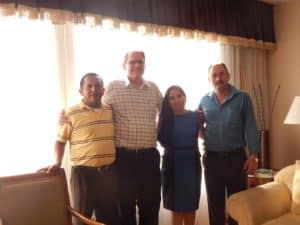
Shoulder to Shoulder is doing incredible things to empower the people of Intibucá. Shoulder to Shoulder will invest in even more meaningful missions, deepening relationships of trust and commitment with the people and associations in Intibucá and Honduras. It is the best of times. None of it happens without facing strong head winds. We will design and plan, consider and decide, and seek out donors and partners to share our mission shoulder to shoulder. This, as necessary as it is, will not yield success. It is not the keenness of our minds, nor the professional quality of our planning, nor the wealth of our endowment, that secures the rightness of our mission. It is the integrity of the heart. If we maintain the integrity of our hearts, our dreams will wake. The results will not appear as we had envisioned. They will be so much better than the limits of our minds. They will flood our hearts with joy.
Indeed, these are the best of times, these are the worst of times… And the story continues…
25 Years: The Dignity of Working Shoulder to Shoulder
 January 15, 2015
January 15, 2015
The 1969 war between Salvador and Honduras, sometimes referred to as the Soccer Wars or the Hundred Hours War, left many parts of Honduras bordering El Salvador isolated, with shortages of basic services and infrastructure. These effects last into the present day where, in the southern section of the department of Intibucá, services and infrastructure remain scarce and tenuous. In 1990, the small municipality of Santa Lucia suffered disproportionately the price of a war two decades past. Here there was no physician, no non-profits or relief agencies, no electricity, and the only water came from the community tap in the center of town.
Meanwhile at the University of Cincinnati, Dr. Jeff Heck, part of the junior faculty, was organizing a medical brigade to Honduras to be sponsored by Ruth and Daniel Castro from the Christian Medical and Dental Society of Honduras. Could any of the participants on that brigade really have known what they were getting into? Had they known, would they have gone? And what amazing things would spring forth from the innocence of their good will!! A team of twenty, including five physicians, slept on the floor at the school and municipal building. They worked from sunup to sundown and saw 4000 patients, assisted by the public health nurse, the only medical professional working in the area. The community asked them to return.

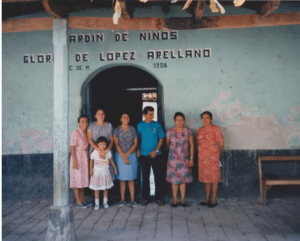
At this point, anything could have happened. The University of Cincinnati might have thought the project a folly and ended their support and funding. The project could have continued by way of sending brigades year after year to simply respond to physical needs. But what did happen was so much greater and so amazing. Relationships were forged, formed, and evolved, creating a synergy that profoundly transformed the lives of everyone committed to those relationships. In 1993, with money left over from a $1 million grant to study diarrhea among travelers to the tropics, construction on the first clinic began. A team of professional builders volunteered much of their time and talent, many of the building supplies were donated, and Chiquita Brands assumed the expense of shipping materials. Good will, service, caring, and the integrity of human relationship united to become a permanent site for healing and development.
After four or five years, Daniel and Ruth Castro suggested the name Shoulder to Shoulder, becoming interchangeable with Hombro a Hombro. Few organizations title themselves according to their philosophy. In extensive conversations among faculty at the university, among students and brigade participants, among community members in Cincinnati and Honduras, it was clear that this project would not survive or thrive save for the intricate participation of those served, the Hondurans themselves. The living of that philosophy was as much practical as it was ideal, given that so few from Cincinnati spoke Spanish and were only in Honduras once or twice a year. Whatever the motive, the philosophy secured the dignity of the persons served. Shoulder to Shoulder, Hombro a Hombro, became sustainable as Hondurans themselves took ownership of the service, care, and empowerment that has always identified its vision and mission.

Twenty-five years ago, a few professors, doctors, and medical students from the University of Cincinnati offered a hand of assistance to a desperately poor and oppressed people. They did so with respect, recognizing that Hondurans themselves would own and manage their health care and development. Shoulder to Shoulder was once small and from Cincinnati. Twenty-five years later, Shoulder to Shoulder/Hombro a Hombro, is big and from Honduras, Cincinnati, and the world. Shoulder to Shoulder once responded exclusively to the physical needs it encountered. Twenty-five years later, Shoulder to Shoulder/Hombro a Hombro, responds to the inherent dignity of all life and seeks to empower and develop relationships of liberation and justice.
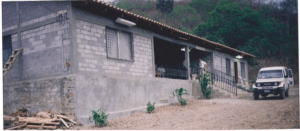
In tribute to Shoulder to Shoulder and in anticipation of the reunion brigade scheduled for May of this year, Dr. Jeff Heck reflects,
“Some of the best people I know have been involved with Shoulder to Shoulder from all walks of life, all with different perspectives, faiths and otivations. The majority have been motivated by a genuine concern for people left behind and have been willing to make great sacrifices on their behalf. Shoulder to Shoulder has done much to help physicians, nurses, dentists, and other health professionals restore their idealism that motivated them to join their professions in the first place. I count myself fortunate to have watched radical transformations in many people. Thus it is difficult to say who benefited the most: the Hondurans or the North Americans who came to ‘help’.”
All of this because twenty-five years ago, twenty people came to Honduras to offer some limited, medical service. Imagine!!


